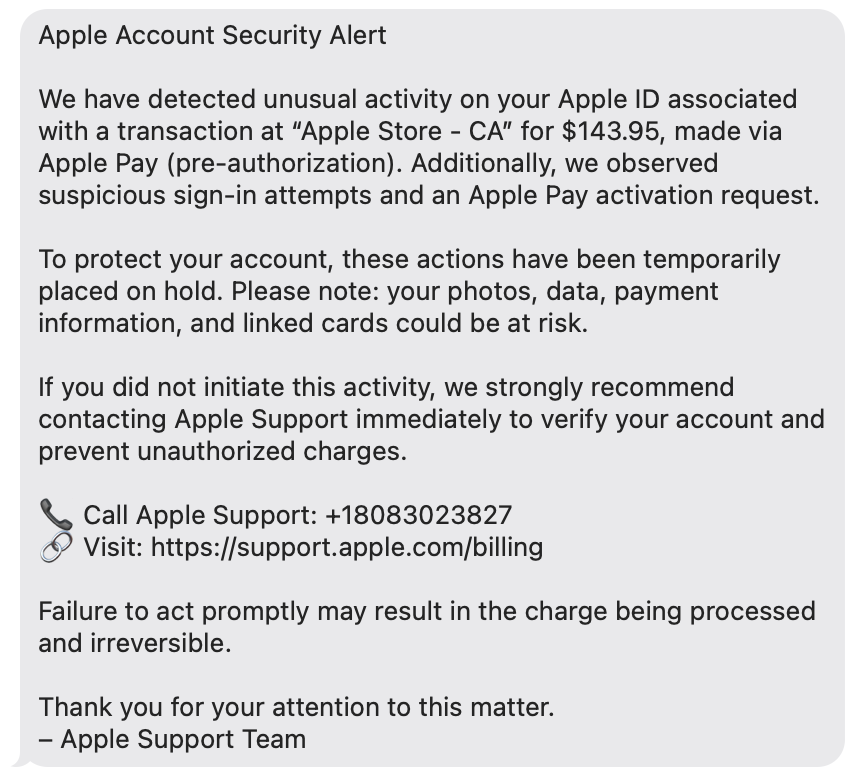
I’ve been around long enough to see job sites lose entire days — even weeks — over problems that started with a simple phone call or email. These days, the scam artists aren’t just after grandma’s credit card; they’re targeting busy professionals who are just trying to keep their crews moving.
And for construction companies, the stakes are even higher. One wrong click, and suddenly your blueprints are locked, your project files are compromised, and your crews are standing around waiting for answers you can’t give them.
Here’s how these scams work — and how to make sure they never derail your project.
The New Playbook: How Scammers Target Construction Pros
-
Scammers have upped their game, but the basic con hasn’t changed:
They get you talking, make you panic, then squeeze you for access, data, or money.Here’s what’s hitting companies like yours right now:
-
Phishing texts about “suspicious activity” – You get a text that looks like it’s from Apple, Microsoft, or even your project software provider. It warns of “unusual activity” and gives you a support number to call. That number connects you straight to a scammer.

-
- Fake calls or emails about account breaches – Caller ID may even say “Apple Support” or “Microsoft.” They tell you your account’s been hacked and you need to act now. The moment you let them in remotely, they can lock you out of your own systems.

- Bogus support numbers in Google search results – You search “Apple help” or “HP printer support” and click the first number you see. Looks official, but it’s not. One call later, they’re demanding payment for fake repairs or quietly stealing your data.

- Pop-ups and emails mimicking real vendors – Flashing warnings about subscriptions you never bought or malware you don’t have. Call the number they give, and you’re right in their trap.

How to Keep Your Crew — and Your Data — Safe
When you’re running a multi-million-dollar build, you don’t have time for games. So here’s your no-nonsense rulebook:
-
Never answer unsolicited “tech support” calls, texts, or emails. If you didn’t ask for help, it’s probably a scam.
-
Don’t trust caller ID or search results. Scammers spoof phone numbers and buy ads to look legit. Always type in the official vendor’s website yourself.
-
Beware of urgency. Real tech support doesn’t try to scare you into action.
-
Never give remote access unless you made the call. If they reached out to you, hang up.
-
Stick to official support channels. For Apple, that’s support.apple.com or 1‑800‑275‑2273. For your project software, log in through your secure portal.
When we call you — whether it’s to fix a connectivity problem or because our monitoring flagged something — we’ll identify ourselves clearly. If you’re unsure, hang up and call us back on the number you already have. No offense taken.
If You’ve Been Hit — Act Fast
Don’t waste time feeling embarrassed. You wouldn’t ignore a broken water main, and you can’t ignore this either. Here’s your first-response checklist:
-
Change every password you may have shared. If you reuse passwords across accounts, change those too. Turn on two-factor authentication wherever possible.
-
Run anti‑malware scans on every affected device. If you don’t have reliable protection, call us and we’ll get you set up.
-
Protect your finances. Call your bank or credit card company, dispute bogus charges, and get a new card number.
Watch for follow-up scams promising “refunds” or “compensation” — those are just round two of the con.
Bottom line: Tech support scams are designed to hit you where it hurts — your ability to keep projects moving. A single scam can lock up your files, burn days of productivity, and put your reputation at risk.
When it comes to protecting your crews and your contracts, treat tech scams like a safety hazard: train your people to spot them, have a response plan, and work with a partner who knows the construction world and can keep your systems as strong as your concrete.
(Featured image by iStock.com/Supatman)





